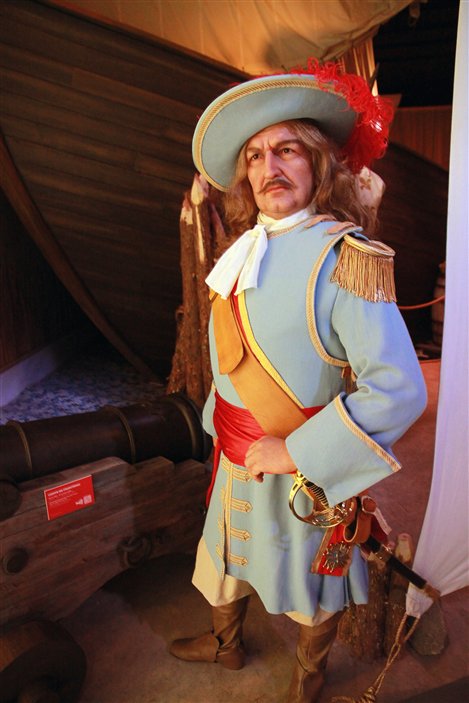Nevermind the controversies currently shaking the Canadian Senate and Prime Minister's Office, nor those swirling like smoke around a certain mayor. This past week the papers have carried two news items about New France's musty tomes and sunken ships! Both are courtesy of Randy Boswell, who teaches journalism at Carleton University but remains on the heritage beat for Postmedia News.
First, it has been announced that the register containing the probable record Samuel de Champlain's baptism will go on display in a few days and until the fall at the Canadian Museum of Civilization. I'm italicising probable here because it seems to me that Boswell's article doesn't reflect accurately enough the uncertainty that persists around this document and Champlain's origins. In the absence of long-vanished records for Brouage, is it safe to confidently conclude that this Chapeleau baptised in La Rochelle is our man? One historian, Éric Thierry, has been quite categorical in his opposition to the interpretation that this is the birth record of the famed explorer. The register, by the way, is not musty at all.
In another piece, Boswell has publicised the launch of an effort by the Great Lakes Exploration Group, a team of American wreck hunters who has received the approval of the governments of Michigan and France, which expects to dive next month to the bottom of Lake Michigan. There they hope to identify the long-sought remains of the Griffon, René-Robert Cavelier de La Salle ship, which sunk during its maiden voyage in 1679. Should we be worried that the effort is being led by a private, for-profit group? I hope not. Time will tell.
P.-F.-X.
First, it has been announced that the register containing the probable record Samuel de Champlain's baptism will go on display in a few days and until the fall at the Canadian Museum of Civilization. I'm italicising probable here because it seems to me that Boswell's article doesn't reflect accurately enough the uncertainty that persists around this document and Champlain's origins. In the absence of long-vanished records for Brouage, is it safe to confidently conclude that this Chapeleau baptised in La Rochelle is our man? One historian, Éric Thierry, has been quite categorical in his opposition to the interpretation that this is the birth record of the famed explorer. The register, by the way, is not musty at all.
In another piece, Boswell has publicised the launch of an effort by the Great Lakes Exploration Group, a team of American wreck hunters who has received the approval of the governments of Michigan and France, which expects to dive next month to the bottom of Lake Michigan. There they hope to identify the long-sought remains of the Griffon, René-Robert Cavelier de La Salle ship, which sunk during its maiden voyage in 1679. Should we be worried that the effort is being led by a private, for-profit group? I hope not. Time will tell.
P.-F.-X.



